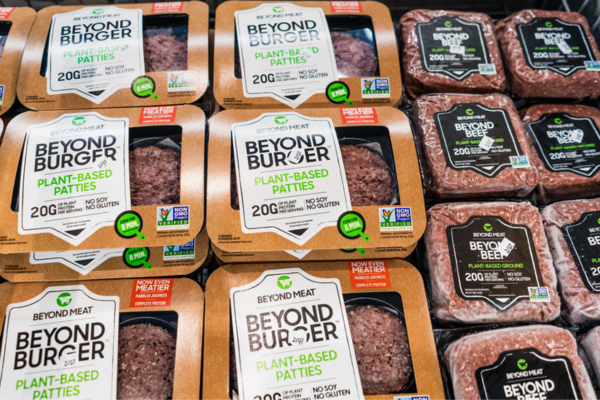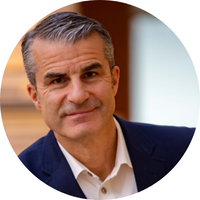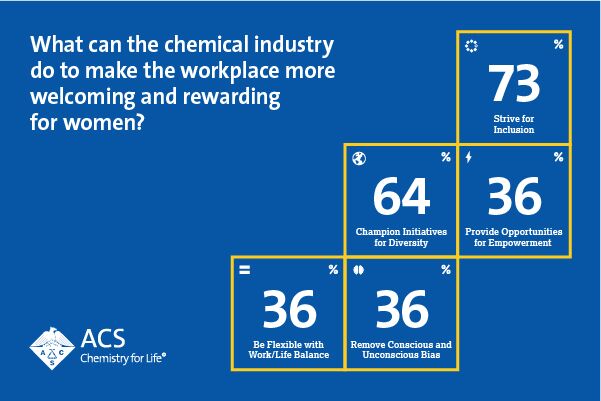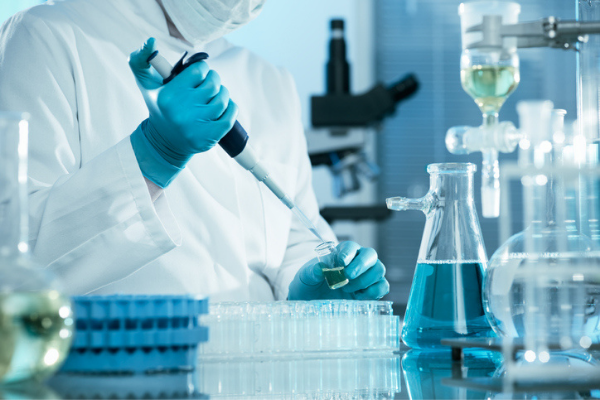
Key Takeaways:
- Biggest challenges in creating plant-based burgers
- Trends to look out for as a shift makes its way through the food and agricultural industry
- What Cargill is doing to maximize sustainability
You came to Cargill after an eight year stint with Dow. I’ve noticed that a disproportionally high number of our Boss Talk participants worked at Dow at some point in their careers. Any thoughts on why Dow’s family tree is so prolific in that regard? Something in the water in Midland, MI?
Not sure about the water, but some companies at certain times develop a unique culture that attracts and builds talent. I’ve had the fortune to be part of two such eras: the GE of the 1990s when I started my career and the decade starting with the mid 2000s at Dow after Bill Banholzer had started as CTO. He combined leaders from the outside with the best of the homegrown talent. For me, there is nothing more motivating and invigorating than working with great colleagues.
ImpossibleTM Foods and Beyond Meat® are the two major players in the plant-based alternative meat business. From a technical perspective, what are the challenges involved with producing these plant-based burgers?
The challenge is all about matching the unique taste, texture and mouth feel of meat. Animal protein is primarily composed of water, protein, lipids, minerals and vitamins. If you think about it, it really is a complex material science challenge, as all these components interact in specific ways.
In addition, the plant-based ingredients need to be exposed to heat or pressure to give them better functionality. For example, pea protein intrinsically does not provide enough structure, so it has to be texturized first to get closer to the fibrous structure of muscle meat.
The right fats and oils are another key to the final solution. Finally, it is not only how the alternative meat solution looks right out of the package, but at least as much as what happens during the cooking or grilling process.
The question is timely, as we just announced new private-label plant-based ground and patty products (more information is available here). Cargill has engaged with thousands of consumers to closely understand drivers, barriers and perceptions of this growing category, from finished goods to the individual ingredients used. This deep consumer knowledge, combined with our culinary experience, innovation and production capabilities, has helped Cargill create one of the best tasting products in this space to help our retail and foodservice customers succeed in this category.
What major technology trends are you following with an eye toward how they may impact Cargill’s future business opportunities?
The food and agricultural space is experiencing a fundamental shift. Startup companies number in the thousands around the globe. Some of the technology trends that may have a foundational impact to Cargill are in the emerging area of ingredient informatics, similar to what happened in materials informatics, and the growing set of protein production methods, including fermentation.
Also, the fast advancing fields of bioinformatics and OMICs (the overarching term for genomics, transcriptomics, proteomics, metabolomics and so on) are at the top of my watch-list. We have entered an era in food and agriculture where innovation is not optional anymore – an exciting position to be in!
Among your scientists at Cargill, what non-technical skills do you most highly value?
Collaboration and communication. Most of the opportunities in front of us will require more and more interdisciplinary R&D work. We just talked about new innovative alternative protein solutions. A lot of people with different backgrounds, often based in different locations, have been involved to make it happen. From the chemistry of food ingredients, including what’s going on during cooking, to materials science to processing and engineering and so on.
Collaborating seamlessly across a wide range of technical and scientific disciplines and finding a common language are critical components to success.
In a September 12, 2019 article, the Wall Street Journal article reported that for the first time in history, “… humans are poised to harvest more fish and seafood from farms than they catch in the wild.” The reporter added that about 12% of the wild whole fish catch goes to feed farmed fish and seafood. Can you explain the motivation behind Cargill developing a GMO-enhanced canola crop, and how it is connected to reducing the amount of wild fish we’re taking out of rivers, lakes and oceans to feed farm-raised fish?
The demand for fish protein nearly doubled between 2005 and 2016 and that growth doesn’t appear to be letting up. Currently, aquafeed for farm-raised salmon contains fish oil to help fish reach desired EPA and DHA omega-3 fatty acid levels. This has put significant pressure on wild forage fish that’s caught to produce the fish oil.
To address this problem, Cargill created an innovative plant-based source of long-chain omega-3 fatty acids for aquafeed. By combining technology from BASF with our own canola innovation capabilities and aquaculture expertise, Cargill will provide farmers access to Latitude™, a plant-based fish oil alternative that relieves this harvesting pressure on wild fish populations, while meeting the market need for a reliable supply of long-chain omega-3s.
How did your parents influence your leadership style?
My leadership style has been shaped by a variety of people over time and my parents definitely played an important role early on. I got my natural curiosity from my dad, who was a mechanical engineer. He was always reading, learning and discussing a wide range of topics.
My mother had a long career as a well-renowned classical musician and performed all over the world. Her consummate professionalism taught me to never take anything for granted and to always be prepared. Regardless if performing at a small chamber music concert or in front of 2000 people in a symphony hall, she always was ready to perform at the highest level.
What advice do you have for your mid-career chemists to help them thrive in a dynamic workplace?
Be curious, remain open to new things, stay connected and keep developing your skill base. It is clear that the pace of change is only accelerating. Organizations, project portfolios, etc., are becoming much more fluid, which also means there are more opportunities.
I strongly believe flexible, well-connected life-long learners will be able to fully take advantage of such opportunities and thrive, regardless of the career stage.
You have 2,000 scientists and technical staff spread across 200 R&D sites. What are challenges associated with leading such a distributed workforce?
Actually, we are not quite as distributed as it seems, with the vast majority of R&D at Cargill concentrated into less than 20 sites. However, we do have to maintain a global footprint, as food and its ingredients tend to be regional. Also, certain research areas need to be in the right environment – especially in animal nutrition. For example, our salmon feed research is on the coast of Norway, as that’s a natural environment to test and validate our research.
Naturally, the main challenges are coordination and communication, to make sure we leverage our capabilities most effectively and don’t re-invent the wheel. One way we address this is with a set of formal “communities of practice” called Core Technologies and Enabling Sciences that are aligned to our key capabilities. These communities virtually organize scientists across businesses and regions in a given discipline to discuss and debate relevant discoveries, challenges and opportunities.
What do you view as Cargill’s most consequential sustainability issue? And what is Cargill doing to address it?
Our biggest sustainability issue is greenhouse gas (GHG) reduction. Roughly a quarter of all greenhouse gases are emitted by food and agriculture. Cargill has set a goal to reduce greenhouse gas emissions in our global supply chains by 30% per ton of product by 2030. That is a big challenge, but working in partnership with farmers and customers, we’re confident that we will get it done.
Soil health is one example. As the largest carbon sink on the planet, soil already stores three times more carbon than forests and other vegetation. Cargill efforts range from enabling farmers to adopt conservation management practices like reduced tillage, cover crops and nutrient optimization to helping cattle ranchers implement grazing management planning and supporting similar efforts to prevent deforestation in areas including Indonesia and Côte d’Ivoire.
Among other things, Cargill is in the animal feed business. While estimates vary, it can take up to 16 pounds of grain to produce one pound of beef. What is Cargill doing to reduce that ratio, saving topsoil, water, and other resources?
Global demand for protein is rising rapidly. Farmers, ranchers and agribusiness are looking to feed a growing population while protecting the planet. Across the food and agriculture industry, there is a pressing need to do more with less impact. In the beef space, Cargill is working to address the environmental footprint of beef through its BeefUp Sustainability program and through feed innovation.
The North American beef supply chain is already over 35% more efficient from a GHG perspective than the global average. The BeefUp Sustainability program is working with farmers, ranchers, innovators, and Cargill customers to reduce GHG emissions in Cargill’s North American beef supply chain by 30% per pound of product in four key areas: grazing management, feed production, innovation and food waste reduction.
The sustainability footprint of protein is highly connected to animal nutrition. That’s why Cargill is also looking at how animal feed, additives and farm management techniques can be used to reduce the total carbon footprint of the livestock and fish we feed.
Cargill animal nutrition has invested more than $150 million over the past three years in our core nutrition R&D capabilities and innovation to help our customers improve their production feed efficiency. We’ve also made acquisitions and strategic investments to support sustainability in animal production. In 2017, we made an equity investment in Delacon, the global leader in plant-based phytogenics. By improving gut health, Delacon additives can reduce methane emissions from cows and ammonia emissions from pigs and chickens.
That same year we acquired Diamond V, whose products work naturally with animals’ biology to improve their overall health and well-being. This makes the animal more productive, reduces the need for antibiotics and lessens their climate footprint.
What meat or fish can we expect to find on your backyard grill this summer? Would there be any plant-based burgers?
All of the above! For those that know me, I just love food – period!

Florian Schattenmann is Cargill’s Chief Technology Officer and Vice President for Innovation and Research & Development (R&D). He oversees a global team that is driven to relentlessly create value for Cargill and its customers via research, application and product development, and technical service support across agriculture, food, animal feed and bio-industrial markets.
Prior to joining Cargill in November 2018, Florian spent eight years at The Dow Chemical Company. His most recent role was Vice President for Performance Materials & Coatings R&D, where he led innovation across a diverse set of specialty businesses leveraging unique chemistries and advanced technology to drive market-focused product development.
Florian has also held leadership roles at SulphCo Inc., GE-Bayer Silicones, a joint venture of General Electric and Bayer AG based in Leverkusen, Germany, and globally for the Silicone Elastomers Business. Earlier in his career, Florian managed several research laboratories at GE’s Global Research Center.
Florian is a certified Six Sigma Master Black Belt, holds seven U.S. patents and has numerous publications. He serves on the Scientific Advisory Boards for Texas A&M AgriLife and College of Agriculture & Life Sciences, the College of Science and Engineering at University of Minnesota, and the Department of Chemistry at University of Wisconsin-Madison. He earned his PhD in inorganic chemistry from Massachusetts Institute of Technology, Cambridge, MA and his Diplom Chemiker degree from the Technische Universität München, Munich, Germany. Florian lives with his family in Minneapolis. Besides spending time with his family, he loves playing the bass, road cycling and working out.
This article has been edited for length and clarity. The opinions expressed in this article are the author's own and do not necessarily reflect the view of their employer or the American Chemical Society.
Copyright 2020 American Chemical Society (All Rights Reserved)








